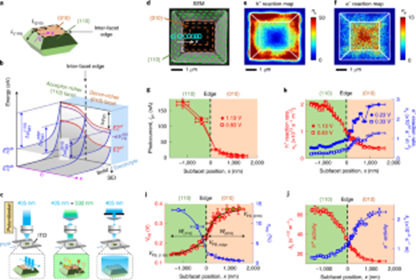3D Semiconductor Particles Have 2D Properties
2-D semiconductors are fast, powerful, efficient, and challenging to fabricate for next-generation electronics. Now, 3-D semiconductor particles, according to Cornell researchers, have 2D properties, which can be leveraged when light is used to drive chemical reactions, boosting solar energy conversion technologies.
The research, led by Peng Chen, the Peter J.W. Debye Professor of Chemistry in the College of Arts and Sciences, could also be used in renewable energy technologies that reduce carbon dioxide, convert nitrogen into ammonia, and produce hydrogen peroxide.
“Inter-Facet Junction Effects on Particulate Photoelectrodes” was published Dec. 24 in Nature Materials. The researchers focused on the semiconductor bismuth vanadate, which can absorb light and use that energy to oxidize water molecules, generating hydrogen and oxygen.
The semiconductor particles have 3D surfaces, full of facets angled toward each other and meeting at edges on the particle surface. Yet they can have different structures that result in different energy levels and electronic properties.
Mao and Chen used a pair of high-spatial-resolution imaging techniques to measure the photoelectrochemical current and surface reactions at multiple points across each facet and the adjoining edge in between and then used detailed quantitative data analysis to map the transition changes.

